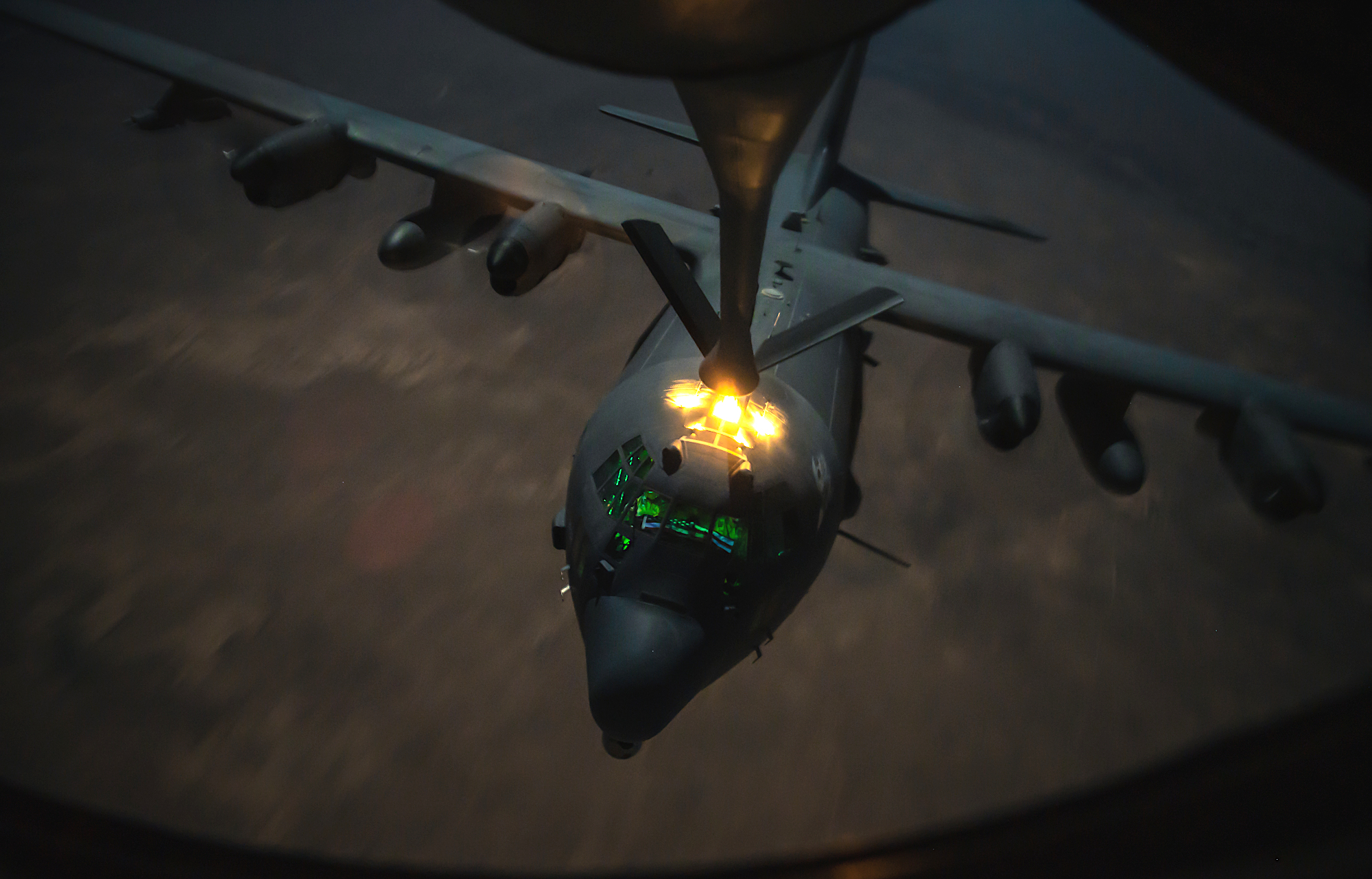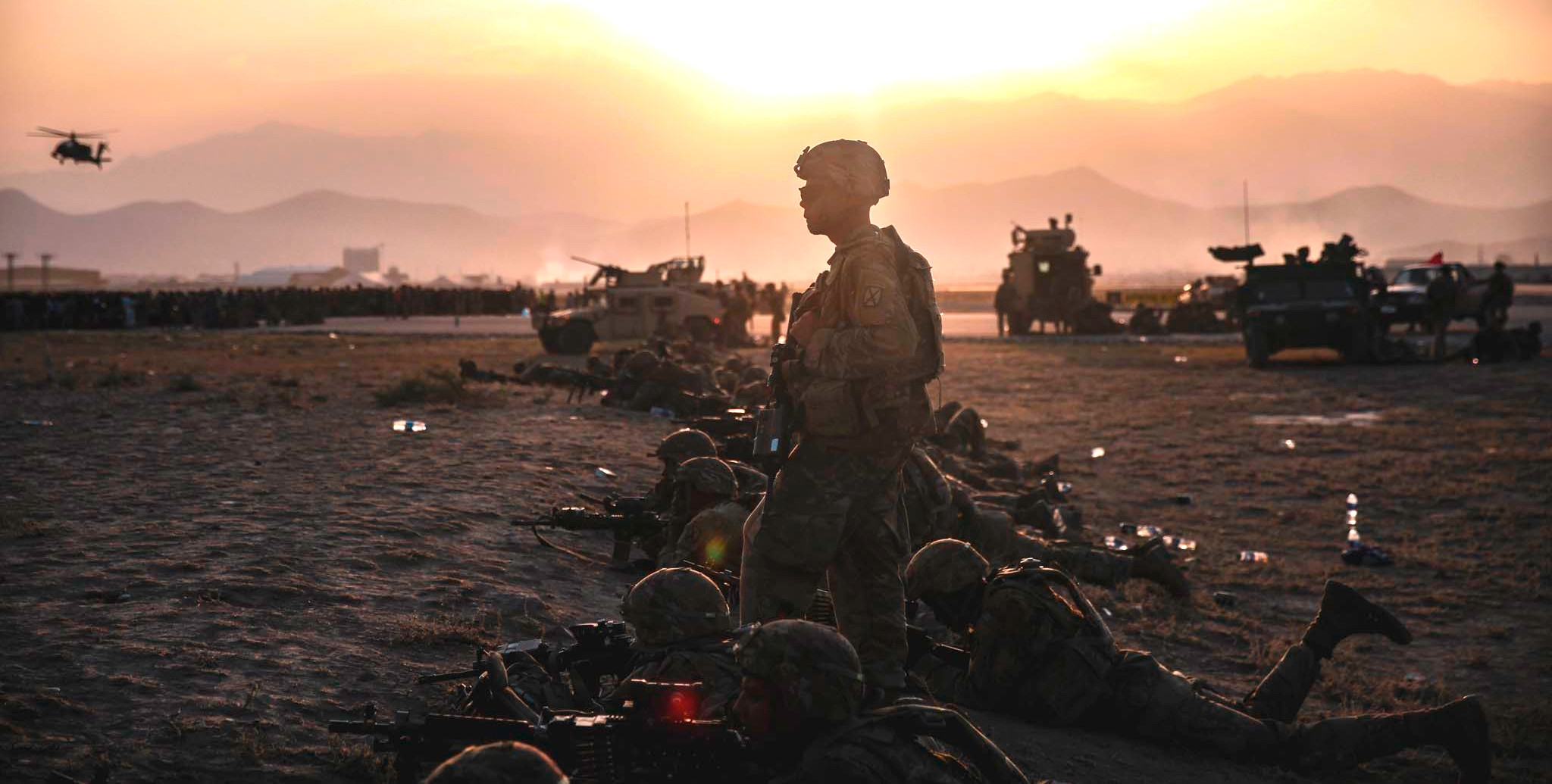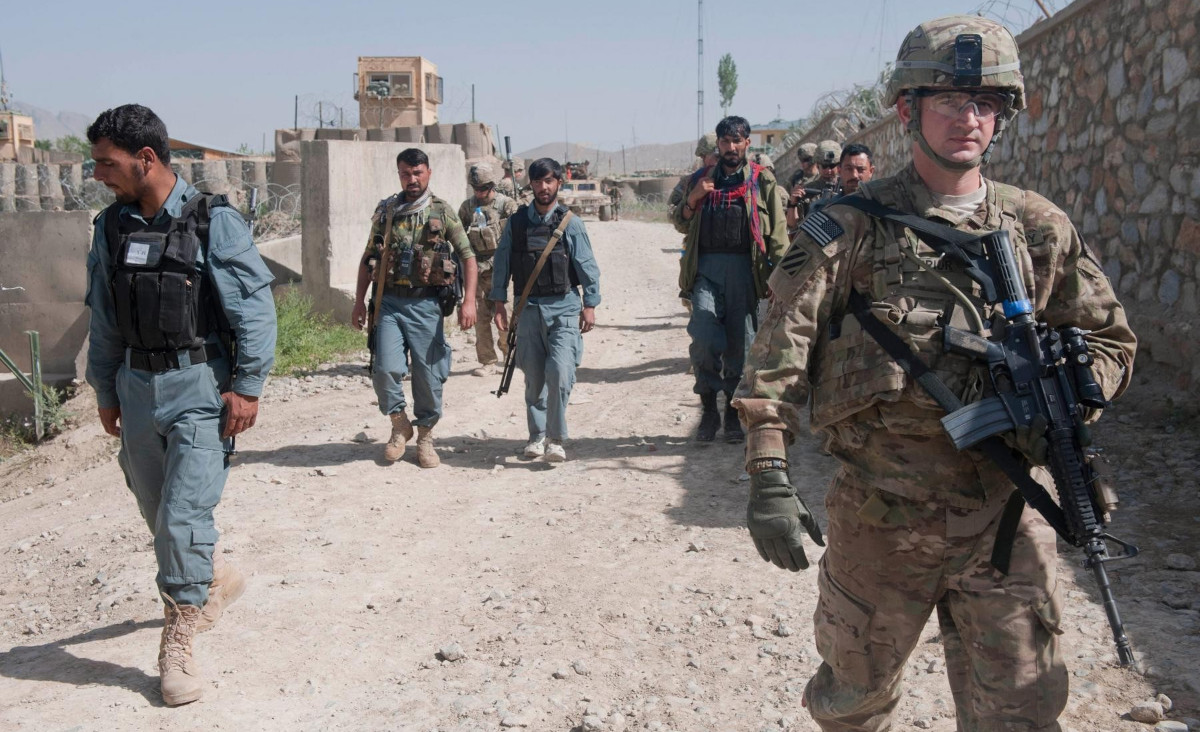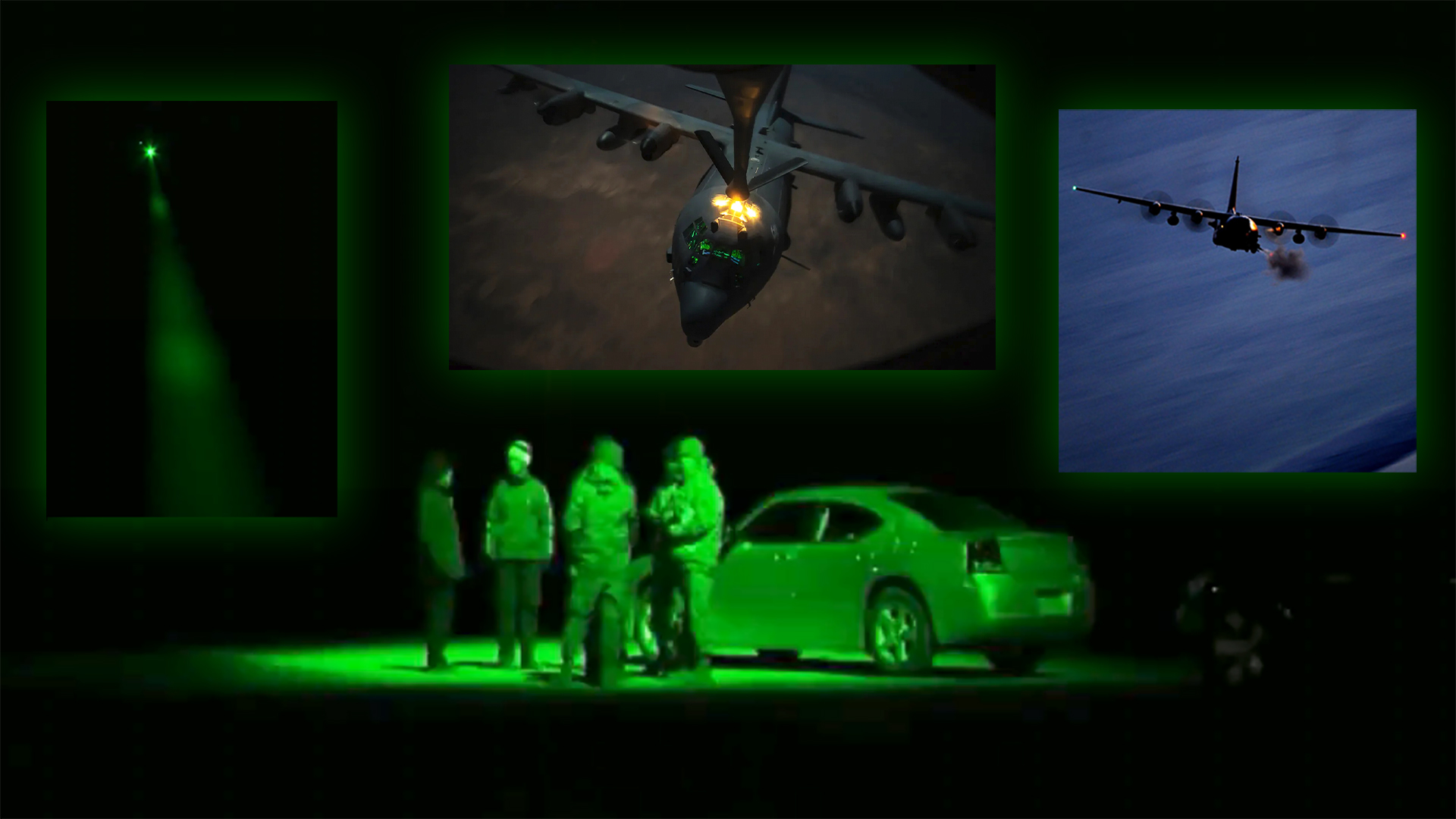The U.S. Air Force’s AC-130 gunships are well known for their diverse arrays of weaponry. That more recent variants of these aircraft, including the latest AC-130J Ghostrider, are equipped with a non-lethal system commonly referred to as the Big Ass Green Laser is far more obscure. This offers a useful additional tool for conducting shows of force or otherwise signaling to people on the ground without ever having to fire a shot. It has recently emerged that crews of a pair of Ghostriders used this capability to good effect while flying in support of the controversial and often chaotic evacuation efforts from Hamid Karzai International Airport in Afghanistan’s capital Kabul just over a year ago.
Earlier this week, Coffee or Die published a piece – which is worth reading in full – on the exploits of two AC-130J gunships, with the callsigns Shadow 77 and Shadow 78, during flights over Kabul in the immediate aftermath of the fall of the city to the Taliban on the night of August 15-16, 2021. The commanders of those aircraft, Capt. Lawrence “Lars” Bria and then-Capt. Culley Horne, shared details about the long-distance sorties, which were flown from Al Dhafra Air Base in the United Arab Emirates thousands of miles away, including the use of the Big Ass Green Laser.

Chaos had quickly developed at Hamid Karzai International Airport, or HKIA, as the Taliban flooded into the city, with thousands of Afghan citizens and foreigners heading there in hopes of fleeing the country by air. The U.S. Embassy, among others, also relocated its operations to the airport. Other American forces still in Afghanistan, along with personnel from the defunct Afghan National Defense and Security Forces, had been moving there, too. HKIA soon became an international ‘island’ of sorts within Afghanistan’s capital.
“You’ve probably seen the images of the aftermath of that,” Bria said in an interview for the Coffee or Die story. “Obviously, at that point, the local Afghan populace was starting to get very nervous and upset about what the Americans were doing.”

Setting up any sort of security perimeter was, to put it mildly, a struggle. The overall situation was only made more complex as a result of ad hoc arrangements between the U.S. government and the Taliban and the dense urban environment full of throngs of innocent bystanders.
“The political environment [was] rather tense. We were trying to make sure we didn’t create an international incident,” Bria explained. “We did have some agreement with the Taliban, so we did have to tread carefully on what we did and didn’t do.”
By all indications, the idea of firing even the AC-130J’s smallest weapon, its 30mm GAU-23/A Bushmaster II automatic cannon, at targets on the ground in this context was a non-starter. This is where the Big Ass Green Laser came into play.
The Big Ass Green Laser is somewhat self-explanatory. It emits a large, strobing eye-safe visible green laser beam. An AC-130 can use it to very precisely illuminate a relatively small spot, around the size of a typical civilian car, on the ground, as can be seen in the brief video below from an unrelated training exercise. The blinking green light can be used to warn or deter individuals on the ground, and illuminate targets or other objects of interest for friendly forces.
The video below features a bright strobing light and anyone with sensitivities to that should be advised before watching.

The system is similar, at its most basic level, to much smaller non-lethal visible eye-safe laser systems that U.S. military personnel use on the ground as part of guard duty around bases and on vessels, as you read more about here.
“As they spotted people breaching the compound, the Ghostriders used their ‘overt’ green lasers, visible to the naked eye, to spotlight the trespassers,” Coffee or Die‘s piece explains.
“We spent the rest of the night scanning the perimeter, calling what we saw to the ground forces,” Bria added. “If there were some people that would hop the wall or break through a gate, they would roll them up.”

In the end, Shadow 77 and Shadow 78’s sorties that night lasted 15.7 and 14.1 hours, respectively – record-setting combat missions for the still relatively new AC-130J in terms of total duration – but the crews never employed any of their weapons.
It is fitting that the Big Ass Green Laser on the AC-130J would be a part of the final withdrawal of U.S. forces from Afghanistan, which brought to a close nearly two decades of American military presence there following the 9/11 terrorist attacks. Years earlier, the first of these lasers had been installed on older variants of the AC-130 in response to so-called ‘green-on-blue’ incidents between U.S. special operations forces and Afghan troops.
“We tried everything, it wouldn’t work,” James ‘Hondo’ Geurts, then one of U.S. Special Operations Command’s top acquisition officials, explained during a talk at a conference in 2014, according to Defense News. “We were having green-on-blue fratricide issues and we wanted a way to tell the Afghans, ‘Hey if you’re shooting at us, that’s probably not going to go so well for you.'”

The original Big Ass Green Laser was a commercial off-the-shelf system intended for music concerts. It took just 17 days to rig it up inside an AC-130.
“From a couple miles away you could flash a green spot,” Guerts continued. “Then we told the Afghans, if you’re shooting and you’re seeing a big green blinking light on you, that’s probably not good for you.”
“It helped stop a lot of fratricide issues,” Geurts added.
It’s not immediately clear whether or not the Big Ass Green Laser installed on the AC-130J is the same commercial system that was first used, or if a different design is now fitted to the gunships.

The laser’s ability to quickly and visibly mark targets or objects on the ground subsequently became apparent, too. Purpose-built military laser spot markers are typically not visible to the naked eye. It “can point at the target and [allow operators to] say, ‘Yup, you’re looking at the right thing,'” now-retired Lt. Gen. Bradley Heithold, then head of Air Force Special Operations Command (AFSOC), explained at a talk in 2015, according to Defense One.
Heithold had been discussing the laser in the context of the infamous mistaken strike by an AC-130U on a Doctors Without Borders hospital in the Afghan city of Kunduz earlier that year. The AFSOC chief said it wouldn’t have necessarily helped in that incident since the U.S. forces on the ground coordinating the strike did not have a line of sight themselves to either the intended target or the hospital.
Regardless, AC-130Js and their crews would continue to provide valuable overwatch over the evacuation efforts until the last U.S. military aircraft like Kabul on August 31. There are no indications that any of them employed their weapons in the course of the operations. How much the Big Ass Green Laser was used after that first night is unclear.
Now, even though America’s war in Afghanistan is over – at least in terms of large-scale operations – the Big Ass Green Laser looks set to continue providing AC-130J crews with a proven, albeit obscure alternative to their very lethal arsenal.
Contact the author: joe@thedrive.com
